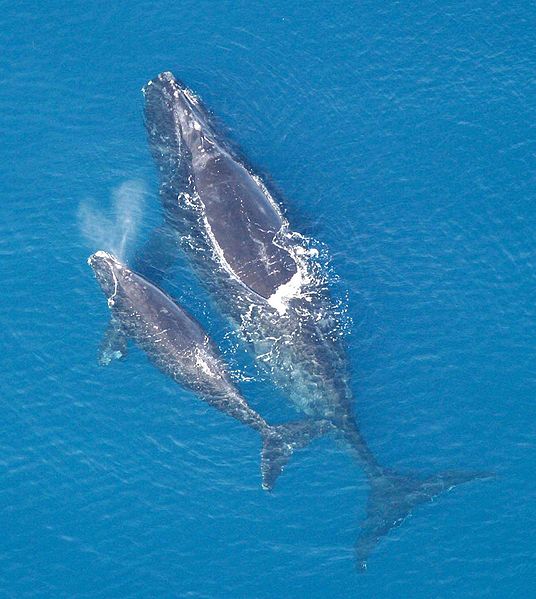Baleen whales belong to the scientific suborder Mysticeti and include some of the largest animals to ever live on earth. This impressive group of whales encompass a broad range of preferred types of habits, habitats, migration patterns, food, communication and lifestyles. But they are all united by the same feeding strategy of using a “highly-specialized filter-feeding apparatus made up of baleen plates attached to the gum of the upper jaw,” as described by the Encyclopedia of Marine Mammals.
This special feeding mechanism allows baleen whales to dine on very small organisms including zooplankton and sometimes small fish, depending on a particular baleen whale’s preference. Despite the small-sized food, this protein-packed diet allows baleen whales grow very large, with the largest blue whale ever measured weighing in at more than 170 tons and close to 100 feet, according to John L. Bannister’s article in the encyclopedia.
In order to eat, baleen whales takes in larges volumes of water (and in the case of the gray whale ocean sediment) and then forces the excess water out through the baleen while the food remains trapped and is then swallowed whole. Quite the system!
Some baleen whales are also famous for their long migrations, their ability to sing across oceans and their occasional acrobatic behavior making them the stars of whale watching trips.
But sadly enough, during whaling times, baleen whales were only valued for the products produced from their dead bodies including “oil for lighting, lubrication and soap, and baleen for articles combining flexibility with strength.” Most baleen whales are still recovering from the travesty of whaling, but this takes time because such large animals have a longer life-cycle, meaning they sexually mature later in life and have a long gestation period.
The North Atlantic right whale is struggling to come back with only 300 to 350 animals living along the U.S. East coast. Facing threats from shipping, fishing gear and habitat destruction, they continue to fight to survive. Hang in there right whales and all baleen whales for that matter because one day hopefully we will do a better job of sharing this planet with you.
(And in case you were hoping for a more complete list of baleen whales here it is: bowhead whale, Northern right whale, Southern right whale, pygmy right whale, gray whale, humpback whale, common minke whale, dwarf mink whale, Bryde’s whale, Omura’s whale, fin whale, blue whale, Antarctic blue whale and the pygmy blue whale.)

Wow, I never knew when I went on whale watches on the east coast that the population was so endangered. Thanks for another thoughtful entry on whales!
what are 5 baleen whales that you can name? can u email them to me if you know or get the chance?
Thanks
********
Here’s a list of 5 baleen whales: blue whale, fin whale, gray whale, humpback whale and minke whale.